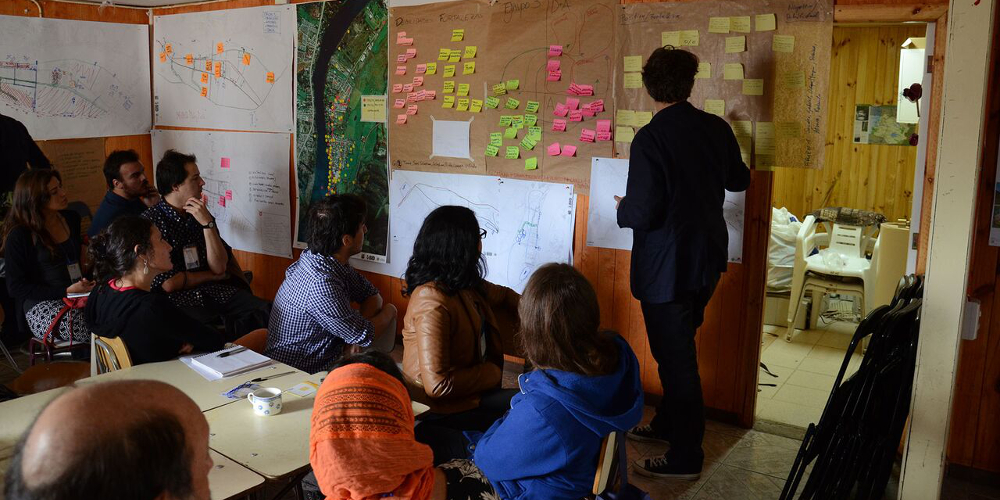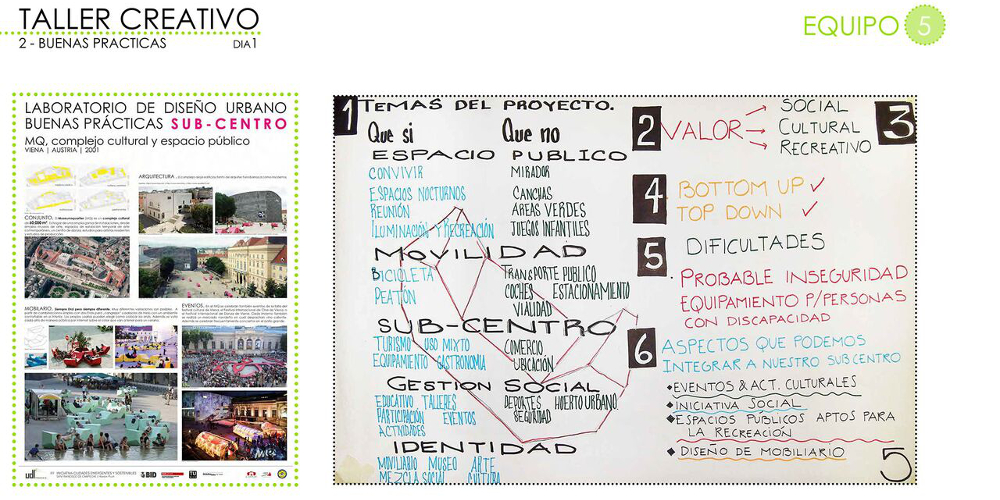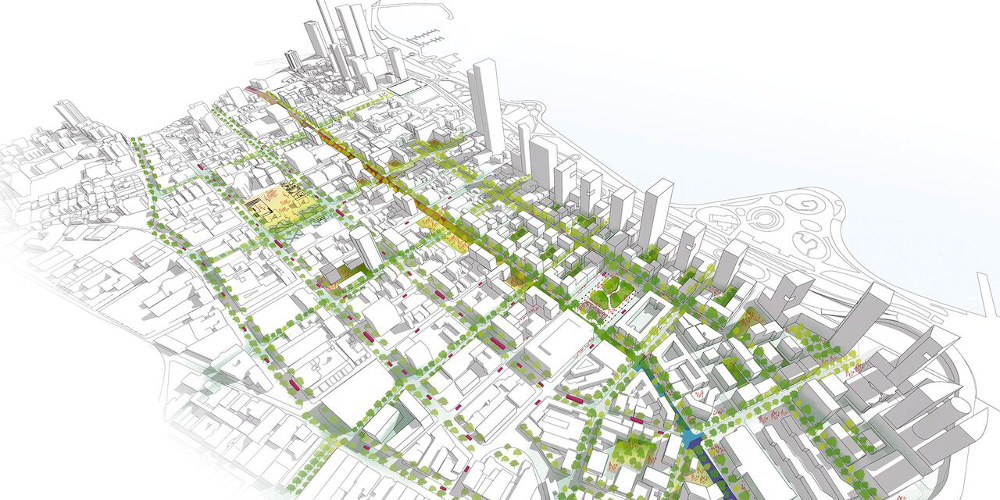The Habitat 21 exhibition at the Ars Electronica Festival 2015 considers the process of urbanization going on worldwide. Due to the social, economic and ecological facts and circumstances of the 21st century, cities no longer emerge and develop today only—as was previously the case—on the basis of their socio-geographic position. Habitat 21 focuses primarily on the efforts of urban planners worldwide to deal creatively with these framework conditions and create urban habitats that are sustainable in every respect. Ars Electronica shows several examples of the challenges they have to surmount in going about this and the clever solutions they’ve been coming up with — for instance, reconstruction of Nepalese cities devastated by an earthquake, and water & sewage infrastructure in Peking.
One part of the Habitat 21 exhibition is the Urban Design Laboratory (UDL) – an experimental design methodology combining people-centered planning, participatory planning tools, urban strategies and urban design. What it is exactly about explains Roland Krebs from the School of Architecture and Urban Planning at the University of Technology in Vienna.

Collico Lab Valdivia, Chile: Be as creative as possible, even if you are no planner. (Foto: UDL)
An Innovation in Planning and Design for Emerging Cities
In the context of Latin American cities – similar to other emerging cities in the developing world – we are discussing urban issues for urban development like rapid population growth, the degradation of existing neighborhoods, the revival and regeneration of abandoned central areas, and urban governance and management, among others. But these debates are not limited to the developing world, also in northern hemisphere we might think about these emerging topics: How do we plan for an emerging city without forgetting ‘urbanity’? How can we manage the city’s spatial growth along with its social, natural, cultural and economic challenges?
Each and every city has planning instruments in place very similar to those of cities in the developed world, such as Land Use Plans or Master Plans. However, these legal instruments are neither designed nor capable of combating such social challenges as severe poverty and urban informality. Moreover, they are not manageable in the context of a dynamic development process. It is clear that the existing urban planning toolkit, which was invented near the beginning of the 20th century, no longer serves to regulate and guide accelerated urban growth. The city has become too complex to be dominated by a uni-dimensional regulatory plan such as zoning.

Managua Lab, Nicaragua: We think about all stakeholders in the planning process. (Foto: UDL)
What is now required are innovative tools for activating integral short-, medium-, and long-term actions that will foster a dialogue between those affected and those who plan and (co-)finance, meaning the administration. The main challenge is to design projects that are based on a clear vision and concrete urban strategies. The vision must be multi-dimensional in order to tackle holistically the web of interrelated problems of urban development, including poverty, inequality, mobility, and the growth of the urban footprint and the environmental and social consequences that accompany it.

Campeche, Mexico: Good practice analysis – feed the brain with fresh ideas. (Foto: UDL)
We at the School of Architecture and Urban Planning at the University of Technology in Vienna collaborated with the Inter-American Development Bank in Washington, DC, in a joint effort to contribute to the body of research and innovative methods and tools regarding planning instruments. An innovative and pilot planning technique, the Urban Design Lab, was established in this context as an experimental laboratory.

Collico Lab in Valdivia, Chile: Engagement also for the urban planners and architects of the cities. (Foto: UDL)
The Urban Design Laboratory (UDL) is an experimental design methodology combining people-centered planning, participatory planning tools, urban strategies and urban design. The UDL calls for a shift away from rigid, conventional planning approaches and towards more complex and flexible ones; in order to develop collaborative and multisectorial design-solutions in the context of rapid urban growth in Latin America and the Caribbean. The leading elements of UDL are the people and the personal, local knowledge they have about a specific, complex, and local situation. Typically, Planners and Urban Designers facilitate and design sustainable new neighborhoods, revive abandoned areas, expand cites, and design urban regeneration projects. In contrast, the UDL employs community workshops as a participatory planning tool, where local key actors and the community members work together to create their own planning visions, scenarios, and urban strategies, which are then developed further by the UDL Designers. A collaborative feedback process shapes the proposals and pilot projects elaborated throughout the workshops.

Panama Urban Lab: an urban renewal plan for the sector of Calidonia. (Foto: UDL)
In the last 18 months we intensively tested the methodology in over ten partner cities of the Emerging and Sustainable Cities Initiative (ESCI) in Latin America and the Caribbean. We engaged communities with our UDL staff, made mistakes, improved the rules and tried out new ways to work with the stakeholders. We are not saying that our methodology is completely new, but we realize that the introduction of an organized and structured dialogue into design-decisions sharpens the proposal and create ownership, and that’s innovation.
At the Urban Design Lab we believe that the concept of empowerment and participation should be an integral part of strategic planning, urban planning, and design. Furthermore, we believe it should be taught as a part of the university curriculum to make this the new standard for developing urban ideas and visions.

Roland Krebs is an Austrian Urban Planning Specialist with experience in strategy planning, project development and management and urban design. He holds a Master in Urban and Regional Planning (2001, Vienna University of Technology) and a Master of Business Administration (2007, Universidad de Belgrano, Buenos Aires, Argentina) and is working as planner, designer and researcher in the University of Technology in Vienna and the Inter-American Development Bank in Washington, DC. Roland is Lead Expert at URBACT, the Cities Program of the European Union.
Don’t you think first world cities shall deploy this methodology? We can discuss this at the Ars Electronica Festival 2015 in Linz.
